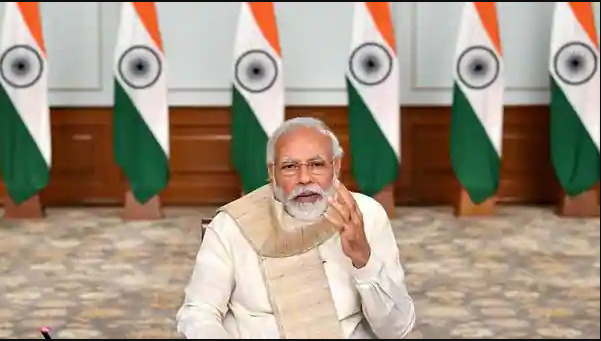In the last seven years, the Modi government has implemented many structural reforms that were waiting in the policy circles of the country for decades. These reforms were waiting because a certain political constituency (read vote bank), which was very entrenched in the system and is very vocal, was set to be hurt by them.
However, without the fear of losing the vote bank, the Modi government implemented the Insolvency and Bankruptcy Code (hit the crony capitalists very hard and they are major donors to political parties and have very good connections), Demonetization (hit the black money hoarders and a good number of traders who vote overwhelmingly for BJP), Agricultural reforms (supposed to hit Haryana, Punjab, and Western UP when MSP is removed), labour reforms (hit labour elites) – all of which hit a certain section of society which was benefitting at the cost of the entire country.
Then, there are reforms like GST, Interest rate bandwidth on which there was no federal or intellectual consensus. So, in the last seven years, and more in two years of the second term, one after another reforms were implemented. Moreover, for the first time, the government is monetarily incentivizing/subsidizing the industry in strategic areas under the PLI scheme otherwise the industry was being seen merely as a venue of the collection of taxes and the government used to pump all the subsidy money into agriculture alone instead of bringing structural reforms in the sector.
In the last seven years, the government has built the infrastructure on which the economy would register an 8 per cent plus economic growth for at least a decade. And these structural reforms coupled with political stability are bringing investors to India despite the devastating second wave. Also, most of the multilateral institutions which are considered authority on the economy like the World Bank, IMF etc are extremely bullish on the Indian economy.
The leftist economists and commentators are saddened by the good performance of the stock markets and continuous equity inflow from domestic as well as foreign investors and are wondering what is driving the investors in spite of the impact of the second wave. What these excessively opinionated and little analytical people fail to understand is that most of the big investors make investments keeping the long term growth story of a country in mind.
“Economic growth will be tempered by the second wave in 2021, but growth will be strong this year and the long-term outlook is quite positive,” said Tom Masi and Nuno Fernandes, co-portfolio managers at GW&K Investment Management. “Short-term investors will be compelled to step aside, but long-term oriented investors understand the opportunity.”
The political stability in the country and a reformist government coupled with demographic dividend are the right mixtures for the economic growth of any country and India has all these ingredients at this time.
Steps like rationalisation of income tax and corporate tax, which a leftist government like that of Congress party would never do due to fear of being seen as pro-Capitalism, send a message across the world that India is ready for business, and the investors and entrepreneurs bought this message.
Read More: ‘Attack on private sector is unacceptable,’ says Modi as we behold the rise of a Chanakyan economy
Just to give an example, GST was waiting for implementation in the policy corridors for almost three decades, as the previous governments could not bring all the stakeholders together to implement the uniform indirect taxation. But the Modi government has been able to build consensus for the implementation of GST in one of the most complex markets around the world. GST has helped increase the number of indirect as well as direct taxpayers. Top economists have predicted that GST will improve the GDP growth of the country by 1-2 per cent.
The market in India is flooded with liquidity and once the danger of Coronavirus ends, there will be a huge surge in investment as well as consumer spending. Many sectors like Information technology, financial services, and agriculture are already performing better than the pre-pandemic years, thanks to economic reforms and fundamental changes in the macroeconomy brought due to Coronavirus. The other sectors too will pick up once the threat of the virus is over and the economy will grow like never before.
